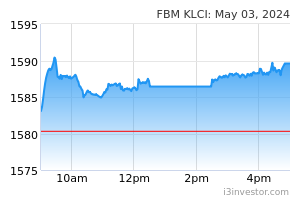KENANGA (6483) - A Growth Stock With Decent Dividend Yield?
bursastocktalk
Publish date: Mon, 22 Jan 2024, 12:00 AM
Reason for the significant earnings improvement
Based on the performance of FBMKLCI and Average Daily Value of KLSE, 2022 and 2023 were lackluster years for the local stock market.
The segment struggled in 2016 and 2017 but managed to turn things around in 2018 with minimal profit before tax.
This success can be attributed to the rapid growth in the group's assets under management (AUM). In just 10 years, the AUM has surged from RM3.13 billion to over RM20 billion as of the end of 2022.
|
|
Assets under Management (RM'm) |
|
2022 |
> 20,000 |
|
2021 |
18,800 |
|
2020 |
13,830 |
|
2019 |
13,490 |
|
2018 |
7,860 |
|
2017 |
8,700 |
|
2016 |
7,400 |
|
2015 |
6,430 |
|
2014 |
5,450 |
|
2013 |
6,250 |
|
2012 |
3,130 |
Are the improved earnings in
FY22 and 9M23 sustainable?
Decent dividend yield
With improving financing performance, KENANGA has consistently paid dividends since FY15 and maintained a generous payout ratio ranging from 60.4% to 89.6%.
|
|
EPS |
DPS |
Payout (%) |
|
2022 |
7.50 |
6.00 |
80.00 |
|
2021 |
16.29 |
10.50 |
64.46 |
|
2020 |
14.56 |
8.80 |
60.44 |
|
2019 |
3.78 |
3.25 |
85.98 |
|
2018 |
1.67 |
1.10 |
65.87 |
|
2017 |
3.35 |
3.00 |
89.55 |
|
2016 |
2.59 |
2.25 |
86.87 |
|
2015 |
1.47 |
1.00 |
68.03 |
|
2014 |
3.83 |
0.00 |
0.00 |
|
2013 |
0.80 |
0.00 |
0.00 |
- A decent dividend yield of 6% could limit the downside of the share price. Given the expected better profit in FY23 and potentially FY24, it is not unreasonable to expect a dividend yield of 6% or more.
- Stockbroking and asset management businesses are highly scalable and have low marginal costs, resulting in faster bottom-line growth when revenue improves. A fund manager who manages a portfolio of RM100m can easily handle a larger portfolio, such as RM200m or even RM500m, as fund management is scalable. For this reason, the bottom line grows at a faster pace when revenue improves. The revenue for FY20 and FY21 were roughly about 50% higher than FY19 but the bottom line quadrupled.
- It is a bonus to shareholders of KENANGA if there is a bull market. A bull market would benefit KENANGA through higher brokerage for stockbroking, increased AUM from portfolio appreciation and net inflow of funds, and significant margin expansion due to economies of scale and low marginal costs.
- The market may not be fully aware that the significant improvement in KENANGA's earnings in FY22 and 9M23 (>100%) compared to previous years (FY16, FY17, FY18 and FY19) was primarily due to the recurring contribution from the investment and wealth management segment.
CONCLUSION:
With a decent dividend yield, KENANGA is worth monitoring as it
offers limited downside potential and good upside potential based on historical
growth of AUM growth and the scalability of its core businesses.
More articles on Bursa Stock Talk
Created by bursastocktalk | May 17, 2024
Created by bursastocktalk | Apr 24, 2024
Created by bursastocktalk | Apr 01, 2024
Created by bursastocktalk | Dec 12, 2023


























